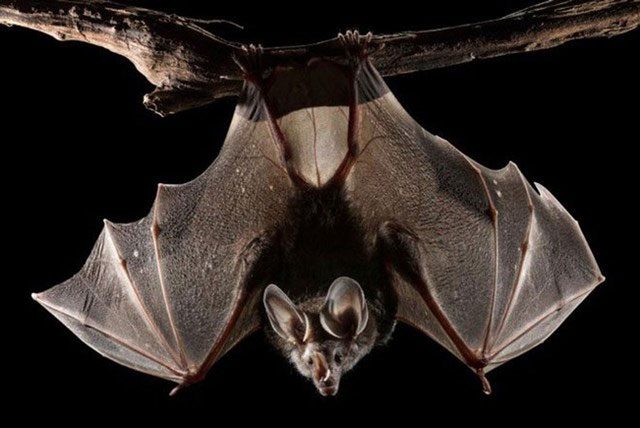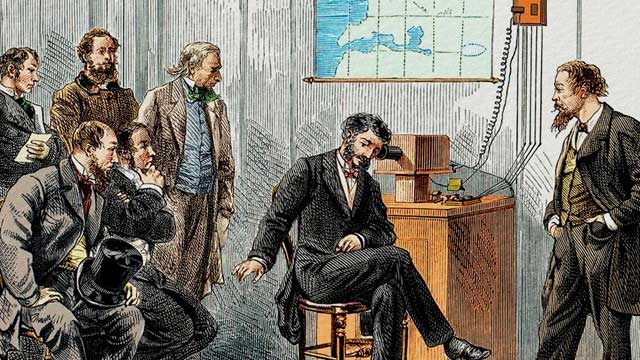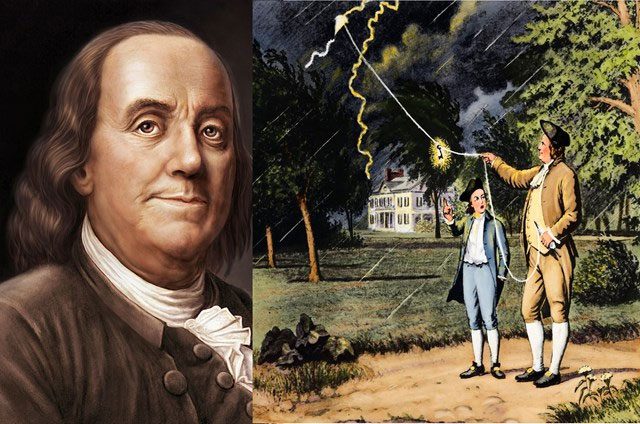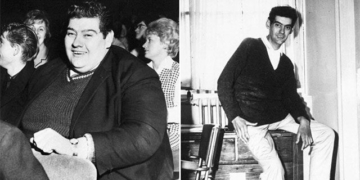If it weren’t for illness or old age, Da Vinci or Einstein could have produced works far superior to what they left behind for humanity. It was death that interrupted their great projects – those of extraordinary scientists.
In the later years of his life, German theoretical physicist Albert Einstein (1879-1955), who developed the general theory of relativity, one of the two pillars of modern physics (the other being quantum mechanics), worked tirelessly to complete his own “theory of everything.” Despite his illness, he refused surgery to continue his work, believing that his “theory of everything,” if completed, would become a formidable rival to quantum physics.
For Einstein, he always believed that spacetime is the fabric of the universe. There, humanity would grasp how everything occurs. However, he passed away before finishing his research. When asked why he refused surgery, Einstein said: “I want to leave when I want. It is pointless to maintain life without the ability to fulfill my dreams.”
The Infinite Genesis of Inventions
Meanwhile, Leonardo da Vinci, the Italian painter, sculptor, architect, musician, doctor, engineer, anatomist, inventor, and natural philosopher (1452-1519), is regarded as one of the most influential figures of his time. However, at that time, the scientific community did not fully acknowledge such a brilliant mind. For instance, the inventive ideas recorded in Da Vinci’s notebooks were dismissed as fanciful dreams, such as “jumping from any height without injury.” Yet today, successful parachute designs have been created based on his theories.
As a versatile genius, Da Vinci was always fascinated by “the impossible.” This led him to create records of inventions that would not be actualized until centuries later.
So, where do the dreams, or rather the great scientific works of these remarkable individuals, originate? This is a challenging question, but to some extent, the scientific community believes they stem from very simple elements in nature. In other words, we succeed when we mimic nature.
Many people would be surprised to find that everyday objects and tools we use are inventions inspired by nature. In an ecological community of the natural world, whether on land or in the deep sea, both plant and animal species exhibit phenomena considered exceptionally unique. These peculiarities provide an endless source of inspiration for inventions applied in human life.
Swiss engineer George de Mestral provides an example: “When driving on highways or mountainous roads at night, you might notice that your car headlights reflect off mirrors or traffic reflectors placed beside the road. However, once you pass by, these reflective mirrors become dark and serve no purpose.” In fact, this application is based on the principle of retroreflection observed in the eyes of animals such as cats, wolves, and bears… Scientists creatively utilized this principle to create reflective road signs at night, enhancing safety for drivers by helping them identify other objects on the road.
Similarly, the bulletproof vest originated from the idea of spider silk. Spider silk is woven very delicately from the spider’s own threads, yet it is a deadly weapon for capturing prey. Research shows that the elasticity of spider silk is five times greater than that of a steel mesh. It is even many times stronger than the materials typically used to make bulletproof vests. Consequently, researchers have studied how to extract genes from spider silk, implant these genes into cow’s milk cells, and use the silk produced during this process to weave nets, combining multiple layers to create a material with special properties capable of making highly effective bulletproof vests.
Going further back, there is the case of the Titanic sinking in 1912. This tragic incident motivated researchers to develop technology for detecting underwater objects. Three years later, in 1915, French physicist Paul Langevin invented a system that utilized sound waves and their echoes to locate underwater objects, which is now known as sonar technology. This technology is new to humans but “old hat” for many animals, as they have always used echolocation to navigate, hunt, and feed. Bats and dolphins, for instance, emit sounds and listen to their own echoes to detect and locate surrounding objects.
A current technological achievement that is very “hot” is the high-speed train. So, where did the idea for its creation originate? The high-speed train was initially designed to mimic the bullets fired from a gun, but it encountered a significant problem: it produced a loud noise like thunder when exiting tunnels. Fortunately, Eji Nakatsu, one of the Japanese engineers working for the company that developed high-speed trains, was an avid observer of birds and realized that the structure of a kingfisher’s beak could be applied to the design of the high-speed train. This not only solved the noise problem but also increased energy efficiency and allowed the train to move at higher speeds.
In a similar vein, another new invention is the creation of brighter, more energy-efficient light bulbs, namely LED lights, which are becoming increasingly popular. To achieve this success, an international team of researchers studied the light-producing organs beneath the bellies of fireflies. They discovered that this organ has a framework with protruding sections and an inclined slope, characteristics that prevent reflection and allow most of the light to emanate outwards. Researcher Nicolas André (University of Sherbrooke, Canada) used lasers to create a similar structure in LED lights and found that their brightness increased by 1.5 times.
As Dr. Annick Bay stated on The Optical Society’s website, “The most important aspect of this improvement is that it shows how much we can learn through careful observation of the natural world.”

Humans learn from bats about sound waves.
“Mimicking” nature and new achievements
The year 2022 also recorded numerous scientific projects inspired by nature. According to Alon Gorodetsky, a biomedical engineer at the University of California (USA), “nature has spent hundreds of millions of years optimizing sophisticated solutions to extremely complex problems. Therefore, if we turn to nature, we can shorten our development process and find immediately valuable solutions.”
Can you imagine that humans can now stop bleeding from the hearts and livers of dogs and rabbits without needing stitches, thanks to a biodegradable adhesive made from the mucilage of okra? This fruit inspired scientist Malcolm Xing (University of Manitoba, Canada) to transform it into an outstanding medical adhesive.
In research results published in the journal Advanced Healthcare Materials in July 2022, a group of scientists suggested that pressing okra in a juice extractor and then drying that mixture into a powder would create an effective biodegradable adhesive. This adhesive can quickly form a physical barrier and immediately assist in the clotting process. This opens the door to testing a special adhesive for humans in the near future.
As mentioned, from the glowing flickers of fireflies, LED lights have been developed. But that’s not all; the fireflies illuminating the night sky have also inspired scientists at the Massachusetts Institute of Technology (MIT) to create tiny robots, the size of a beetle, that can emit light while flying. This is expected to be useful for search and rescue missions. Although so far, these robots can only operate in laboratory environments, researchers are still very excited about their potential applications in the future.
In March 2022, a study published in the journal Nature Sustainability suggested that the strange skin of squid could “transform” into a type of packaging material that can keep coffee and food warm for a certain period, depending on the amount of skin used. According to scientists, squids have miniature organs called chromatophores that can change size significantly, which also helps them change color.
To mimic these pigment-filled organs, scientists from the University of California (USA) have developed “small metallic islands that you can pull apart” and contract. The temperature can then be controlled by the degree of stretching of the material. Dr. Alon Gorodetsky – a member of the research team, stated: “If you place it around a warm object, such as a coffee cup or a hot sandwich, you can control its cooling rate. This is also very useful for humans in winter; there may come a time when we won’t need to wear warm clothes. Nature is truly a model of innovation and engineering.”

Scientist Alexander Graham Bell during the telephone experiment in 1877.
The Struggles of Pioneer Scientists
In the history of scientific research, not only Leonardo da Vinci or Albert Einstein faced obstacles, but many other scientists and numerous scientific inventions have also struggled. Airplanes were once regarded as scientific toys, and the invention of the telephone was initially seen as child’s play… but today, these are indispensable in human life.
“Pioneers always do things differently, and this is always true in scientific innovation. Because they are too novel and go against societal habits, many inventions must go through a testing phase to be recognized for their value,” said the late genius inventor Thomas Edison (1847-1931) after the success of his incandescent light bulb invention.
At that time, the scientific community believed that that light (the filament of the bulb) was unnatural. Many compared incandescent bulbs to will-o’-the-wisps and thought they could only be used in fairy tales. A member of the U.S. Congress once stated: “Edison’s bulb is only useful on the other side of the Atlantic, not in America.”
But Edison did not give up. Not only did he create the incandescent bulb, but he was also a proponent of direct current. However, he opposed the use of alternating current, researched by scientist Nikola Tesla (1856-1943), despite its much better efficiency. Edison once said: “Encouraging the use of alternating current is just a waste of time. No one will use it.” But just a few years later, alternating current triumphed, and today it is applied in all areas of modern life.
120 years ago, in 1903, the Wright brothers invented the airplane during a 12-second flight. They reasoned that if birds can fly, why can’t humans “take to the skies” if they create some sort of device? However, after the test flight, they endured much criticism. In 1911, Ferdinand Foch (1851-1929), a general of the French army during World War I, stated that airplanes were merely fascinating scientific toys and had no military significance.
However, since World War II, airplanes have become powerful weapons in the military and an indispensable means of transportation.
Another example highlights the struggles of scientific inventions. Today, the telephone is closely associated with Scottish scientist Alexander Graham Bell (1847-1922), but its fate was also very rocky.
At the age of 16, Graham Bell began his initial research on sound transmission mechanisms. It wasn’t until 13 years later, at age 29, that he received a patent for the telephone. However, when he attempted to sell his invention to the American communications company Western Union for $100,000, the board rejected it, claiming his device was nothing more than a child’s toy.
Undeterred, Bell founded a telephone company in 1877. Since then, the telephone has been continually improved as humanity recognized its ability to shorten distances in both space and time.
Another Scotsman, John Logie Baird (1888-1946), made history in television technology. On March 25, 1925, Baird first demonstrated moving shadowgraph television in London (UK) using a ventriloquist dummy that could speak and move. By January 1926, Baird proved that moving images could be transmitted via radio waves. Over two years later, in 1928, television signals could be transmitted across the Atlantic between London and New York (USA).
However, television also faced criticism upon its introduction. Lee De Forest, who is often regarded as the father of radio, claimed that television was an impossible invention and could not be commercially viable due to its high costs, stating that “humans could only have television in dreams.” But today, television is no longer a dream; it is present in most households, including those of the poor.
On this occasion, it is also worth mentioning the person behind the historic invention of the lightning rod. He was American physicist Benjamin Franklin (1706-1790).

Benjamin Franklin with his son during the kite experiment, the origin of the lightning rod. (Source: History).
In 1752, at the age of 46, Benjamin, along with his 21-year-old son William, conducted an experiment to prove hypotheses about the nature of lightning: that lightning is essentially an electrical discharge. He flew a kite into the sky, attaching a small iron rod to the top to attract lightning (acting as a lightning rod). The kite was tied to a conductive string, with a key attached at the end. When it rained, the string absorbed water, making it conductive. Benjamin could feel the electric charge accumulating in the key. This proved that lightning is indeed an electrical phenomenon.
Both father and son risked their lives to demonstrate their invention because, at that time, no one believed that humans could “attract lightning,” let alone convert it into electricity. Fortunately, they were unharmed during the experiment, as only a year later, German physicist Georg Wilhelm Richmann reenacted a similar experiment in St. Petersburg (Russia) and was killed.
Following Richmann’s death, Benjamin and his son faced severe criticism for allegedly challenging and infringing upon divine powers.
Painful yet undeterred. In 1753, Benjamin Franklin decided to attempt applying the first lightning rod in Philadelphia (USA). As a result, his house was unharmed during that year’s stormy season. From then on, his invention became widespread. To acknowledge his contributions to the field of electricity, the Royal Society of London awarded Benjamin Franklin the Copley Medal for outstanding achievements in scientific research. Since 1914, Benjamin Franklin’s portrait has been printed on the $100 bill. To this day, Benjamin Franklin remains one of the few scientists featured on currency.
Among countless human inventions, the scientific community still honors the five greatest inventions that have changed the world. First is the wheel. In its early days, the wheel had a thick and solid design, often made from primitive materials like stone and wood. From these heavy solid wheels, the design improved with spokes around 2000 BC. This significantly reduced weight, allowing the wheel to operate more smoothly and increasing transport speed. By 1836, the circular wheel was recorded. Second is language. One of the first writing systems was the pictographic script used by the Sumerians around 2900 BC to record trade documents, invoices, laws, hymns, prayers, and stories… To this day, language continues to evolve and develop. Third is the printing press, invented by German scientist Johannes Gutenberg around the 15th century. In fact, printing has a history dating back six centuries earlier when the Chinese copied information by carving characters and images onto a wooden slab, then applying ink and pressing paper onto it. However, this method was incredibly time-consuming. Fourth is the vaccine. Nearly 300 years ago, two English doctors, Thomas Dimsdale and Edward Jenner, came up with a crazy idea that changed the entire medical world. These two doctors conducted a dangerous experiment by intentionally infecting a healthy person with a weakened pathogen to create immunity. And lastly, the “newest” is the computer. Holding a computer connected to the internet, the world is almost at your fingertips, giving you access to vast amounts of information and culture, allowing you to research essential information. However, to achieve a compact computer that is complete with amazing features as we have today, it has undergone a developmental journey lasting nearly a century. Although there is still much debate about the true origins of the computer, many believe that the first computer in history was the Turing machine created by scientist Alan Turing. This machine was designed to decode the Enigma code used by Nazi Germany during World War II. |


















































